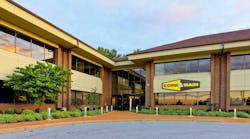View From Below
The Pennsylvania Department of Transportation’s (PennDOT) responsibility to keep the public safe while traveling is more than meets the eye. These duties are apparent when looking across the vast expanse of interstates, bridges and rural roads winding through Pennsylvania’s abundance of mountains and river valleys. But what about the extensive underground infrastructure that carries storm water runoff and various utilities beneath the roads? These systems of pipe and tunnel, too, are in need of regular maintenance and repair in order to keep travelers safe.
Our nation’s DOTs understand that while the underground systems of storm water structures are out of sight, they cannot be out of mind. Underground infrastructure is under constant strain due to both static and dynamic loads causing deterioration over time. Static loads are in the form of groundwater pressures and earth compaction or movement. Dynamic loads can be in the form of vehicular traffic above. In addition to these types of loads exerting strain on the physical properties of underground storm water structures, there exists the corrosion and abrasion to the structure’s material due to the constant water flows it carries. A buried structure in a fully deteriorated mode, for instance, could lead to the collapse of a pipe and an ensuing sinkhole in the road surface above. DOT road maintenance and bridge design personnel continually evaluate the conditions and course of action needed for these buried infrastructure components, just as they do for the highways and bridges above.
The Pennsylvania Project
During a recent road resurfacing project in Mansfield Borough, Pa., PennDOT faced all of the above challenges and more. Mansfield, a small Victorian town located in the picturesque mountains of north central Pennsylvania, has few options for traffic diversion. A scheduled resurfacing of a state route intersecting the town’s main artery first required addressing roads that lay above storm water collection pipe that had exceeded life expectancy. The failing storm pipe ran parallel and in close proximity to a borough-owned water main that could become damaged if disturbed by open trench excavation in the immediate area. All options were evaluated and a Reline America ultraviolet (UV) cured-in-place-pipe (CIPP) lining (a structurally independent pipe-cured main line within the host pipe) was chosen as the solution.
The UV-cured, fiberglass composite CIPP was introduced to PennDOT’s District 3 project management personnel during a demonstration hosted by Abel Recon, a full-service infrastructure rehabilitation contractor based in Mountville, Pa. “Our focus on business development has been based on an educational process—a direct hands-on effort to facilitate knowledge and provide a working understanding to the designers, managers and field operations personnel about the characteristics of the materials and its capabilities,” said Hap Witmer, general manager for Abel Recon.
A Tight Situation
The Mansfield storm pipe lining project consisted of consecutive segments of large-diameter corrugated metal pipe ranging in size from 15 to 36 in. in diameter. Because Abel Recon installs the liner from inlet box to inlet box only, and the liner is manufactured and shipped for each specific segment of pipe, the varying pipe diameters were not an issue.
A general assessment of the condition of all pipe segments in the project was severe deterioration due to corrosion, with a majority of the pipe bottom completely missing. The lining process began with removal of soil and debris deposited in the storm pipe with a high-pressure water jet. A slip-sheet was installed the entire length with the purpose of spanning the missing pipe invert and protecting the liner from snags and cuts from the damaged metal pipe during insertion. The lining was inserted, inflated with air to expand tightly inside the host pipe and cured utilizing a UV train.
The Technology
Since CIPP technologies first were developed in the early 1970s, engineering disciplines and end users such as DOTs, public works departments and utilities demand higher quality assurance and control in trenchless rehab materials and installation technologies. Manufacturers continue to bring these solutions to market.
UV wavelength-specific resin technology has facilitated advancement in curing equipment technologies such as Reline America’s Quality Tracker System, the technology used in this project. This QA/QC system incorporates an integrated series of closed-circuit television imaging and infrared sensor monitoring that operates inside the liner tube prior to and during the resin curing stages of the fiberglass composite pipe. The system records the real-time visual image and sensory data for every foot of the CIPP cure.
“The Quality Tracker System takes you inside the fiberglass composite CIPP during the entire pipe segment cure,” Witmer said. “When an inspector observes all of this data monitoring, he or she is truly assured, without a doubt, that we have provided a renewed structural pipe lining inside the once-failing host pipe that will perform for 50-plus years.”
Conclusion
By specifying the trenchless pipe rehabilitation process of UV CIPP lining, the problems associated with open-cut excavation and total replacement of the failing storm pipe were eliminated. The risk of digging in close proximity to the borough’s underground utilities and disruption to the community was avoided. During the two-week project, commuters were kept moving through the work zone using minimal traffic control measures and were virtually unaware that this underground work was taking place.
“With increasing demand placed on repairing storm water collection structures with tighter budget restraints, and public intolerance for disruption to their daily travels, I expect PennDOT to look more to this technology as we move forward,” a local DOT official said.
The utilization of the advanced technologies in process control monitoring and fast-curing capabilities of the UV-cured fiberglass lining system gave Abel Recon the tools to complete the project well within the timeframe required. Trenchless technologies will continue to advance. The outcome will be added to the solutions available to assist the transportation departments, public utilities and communities in revitalizing our nation’s infrastructure
Download: Here


